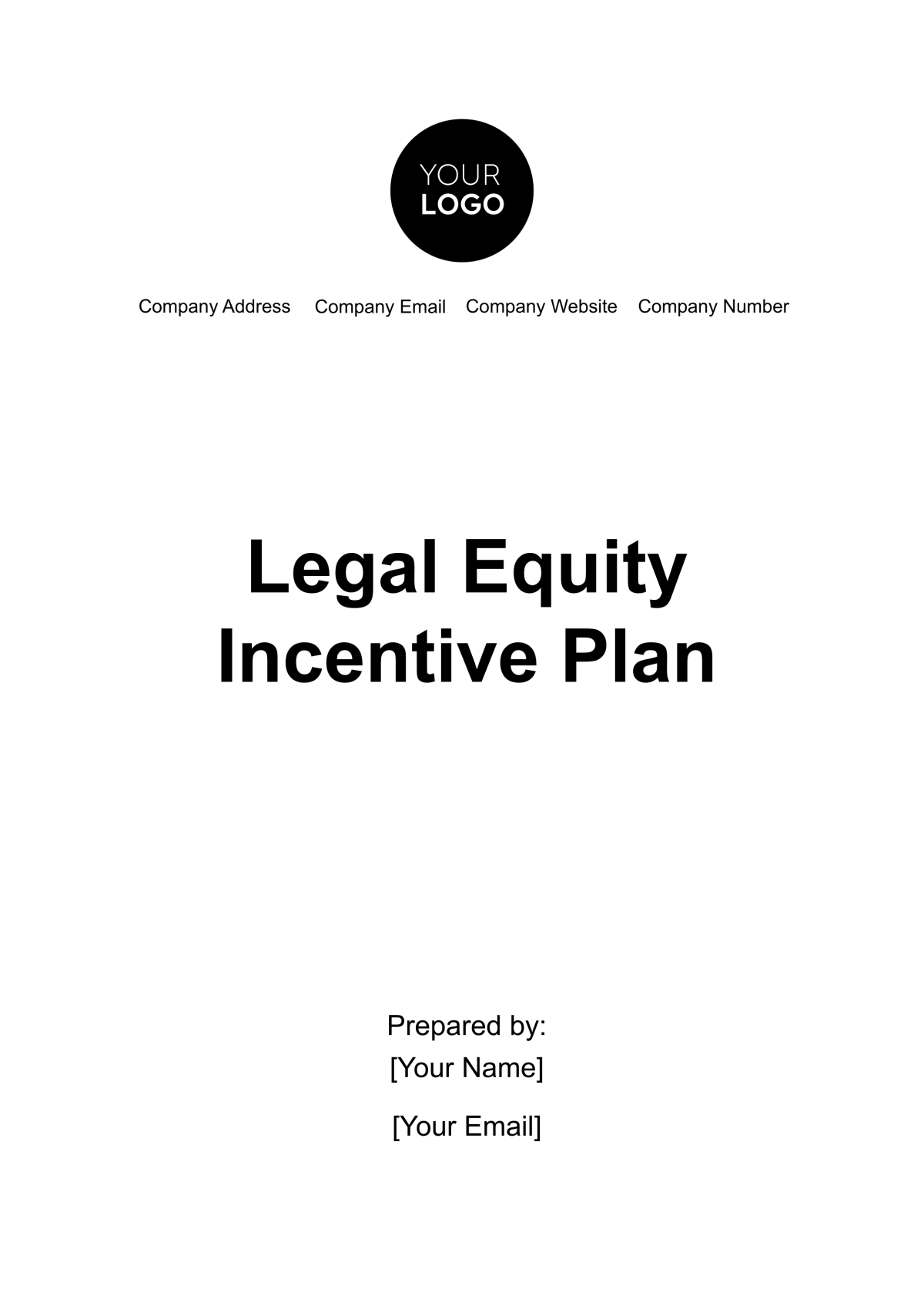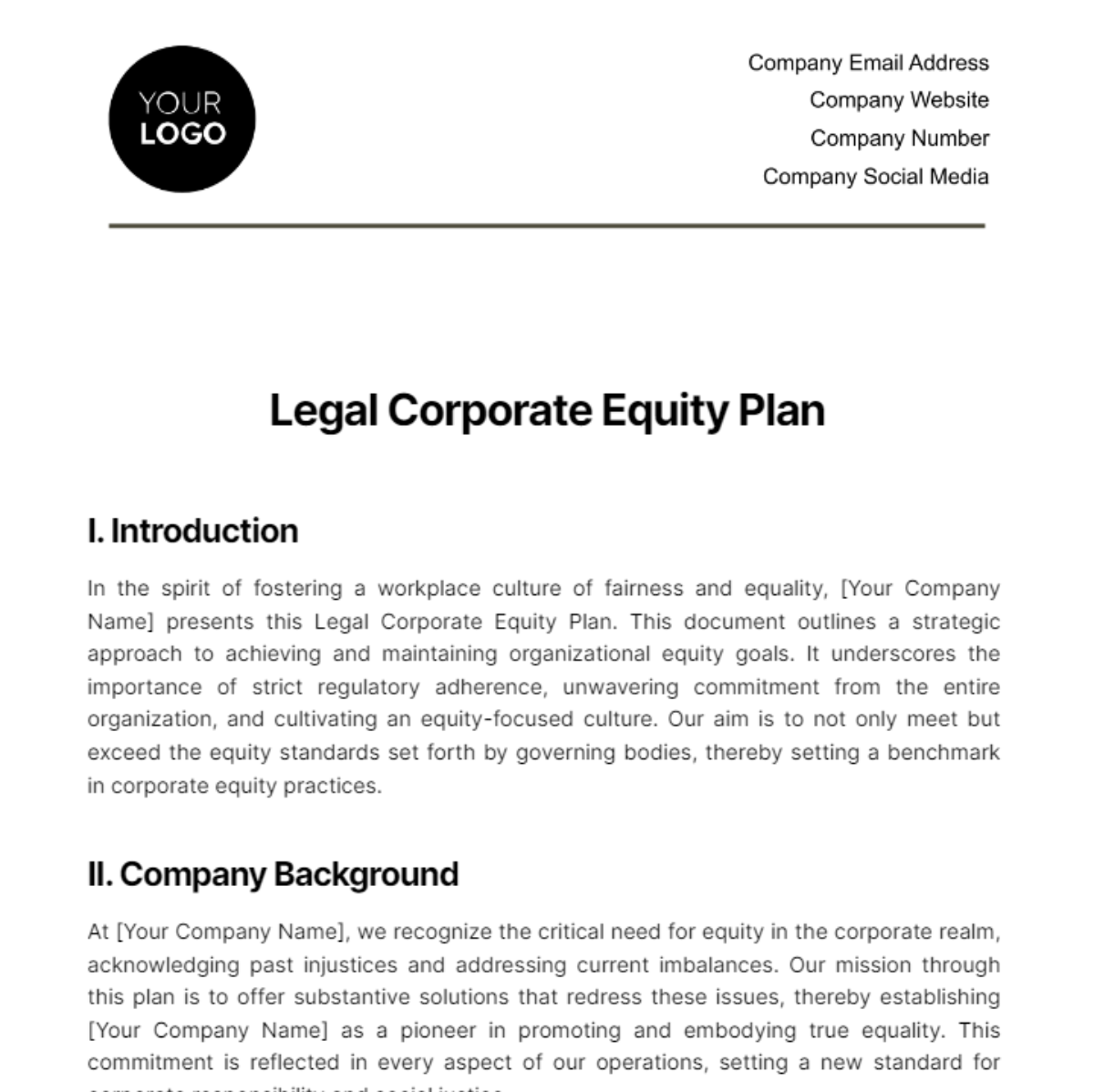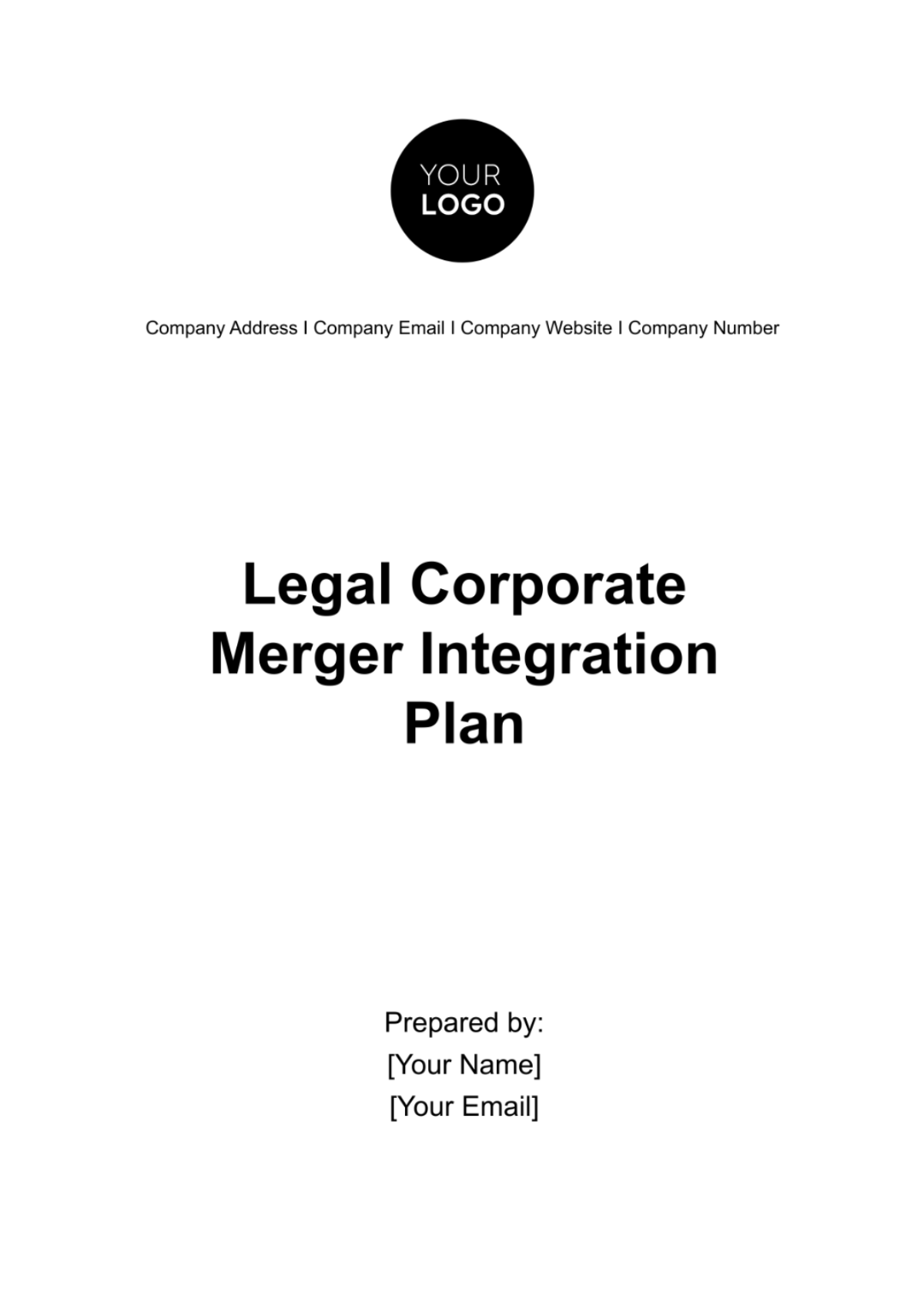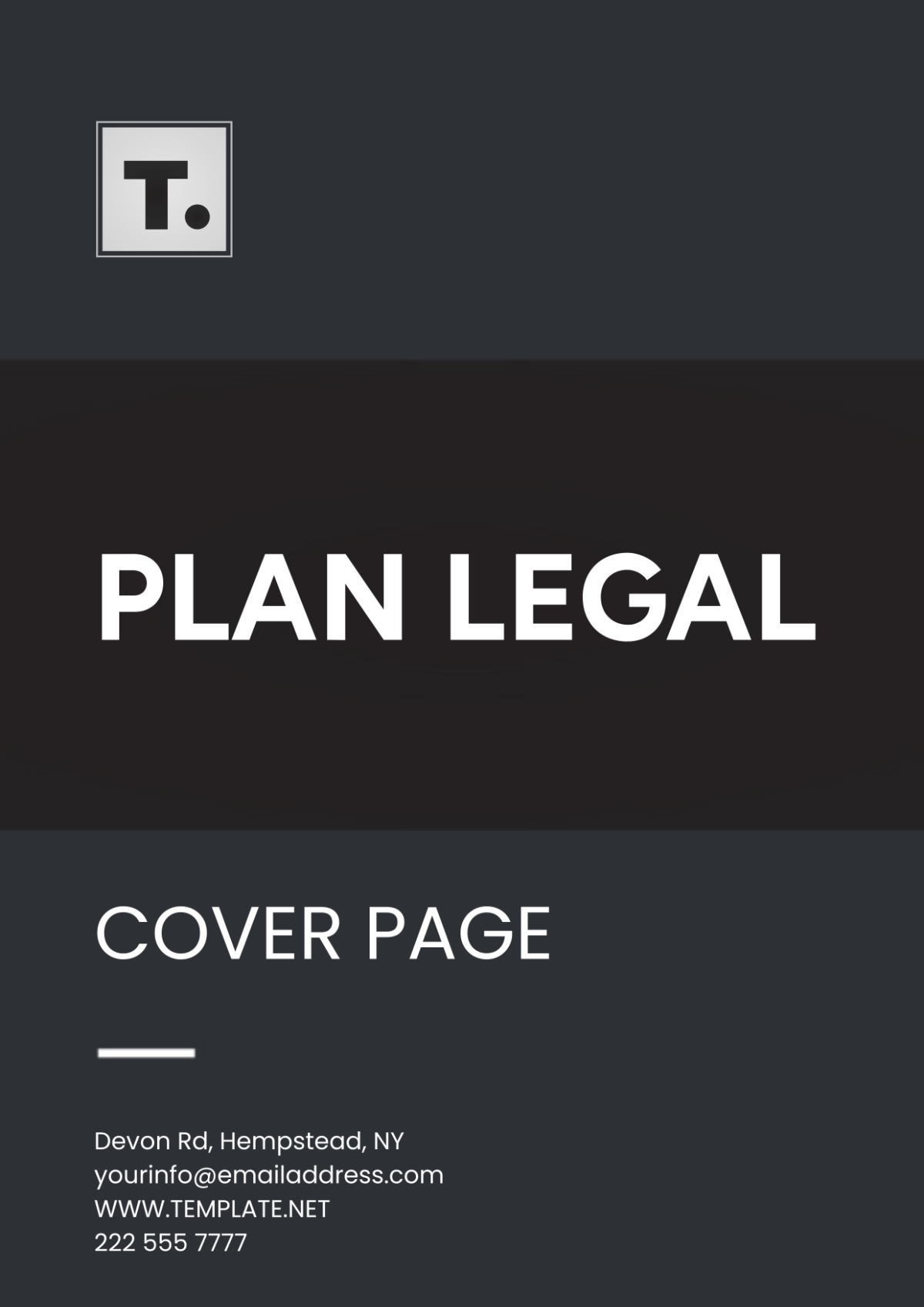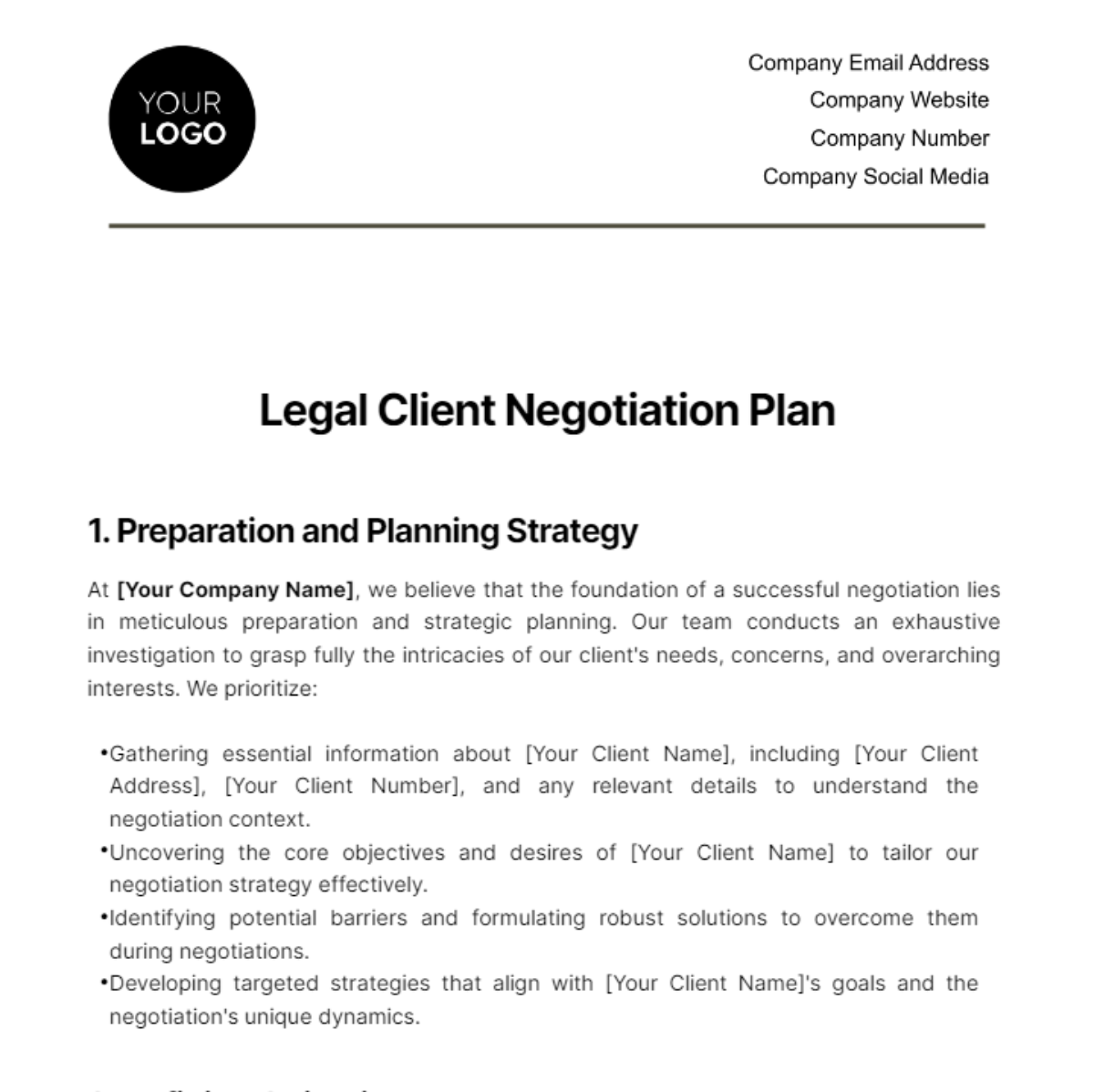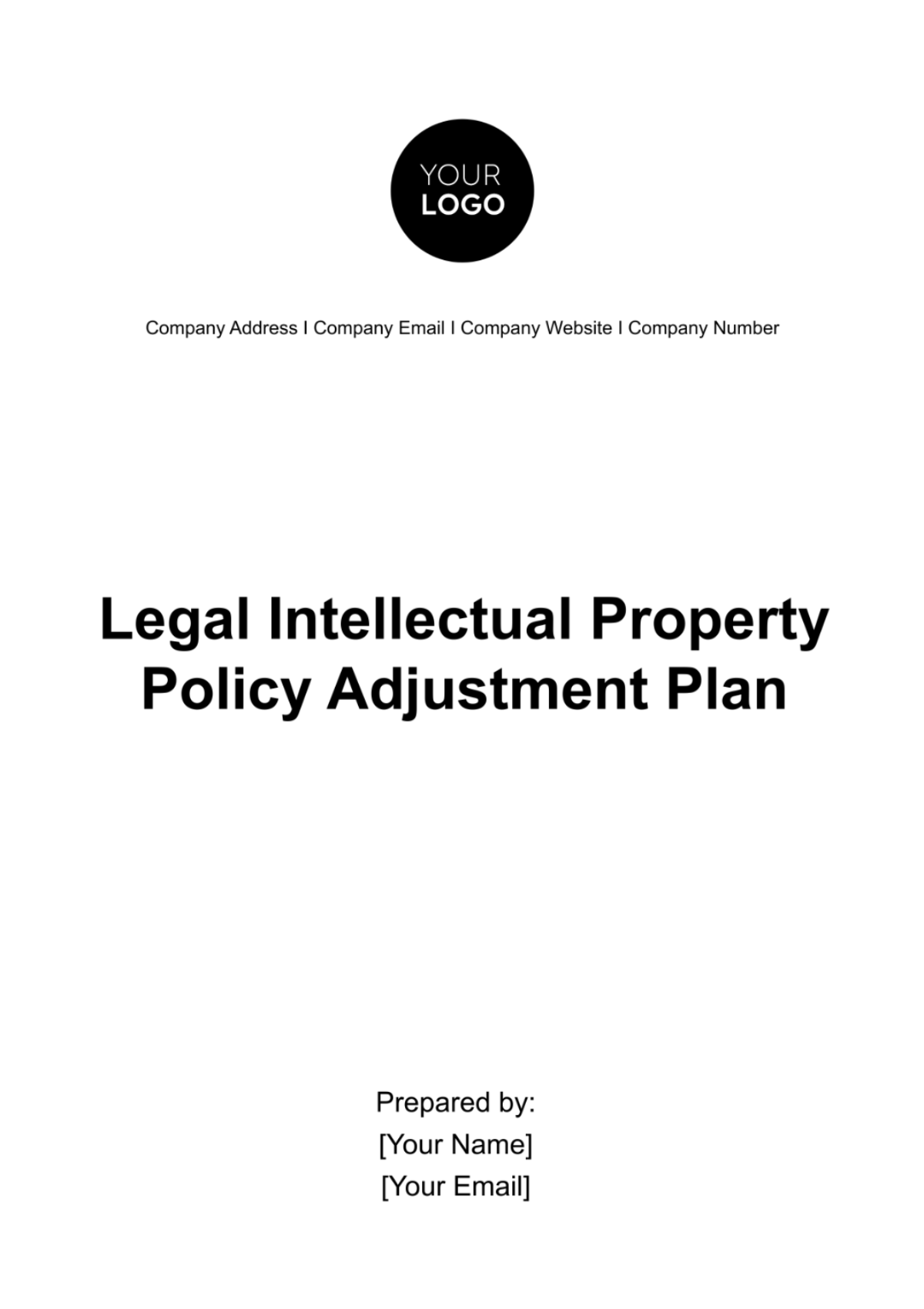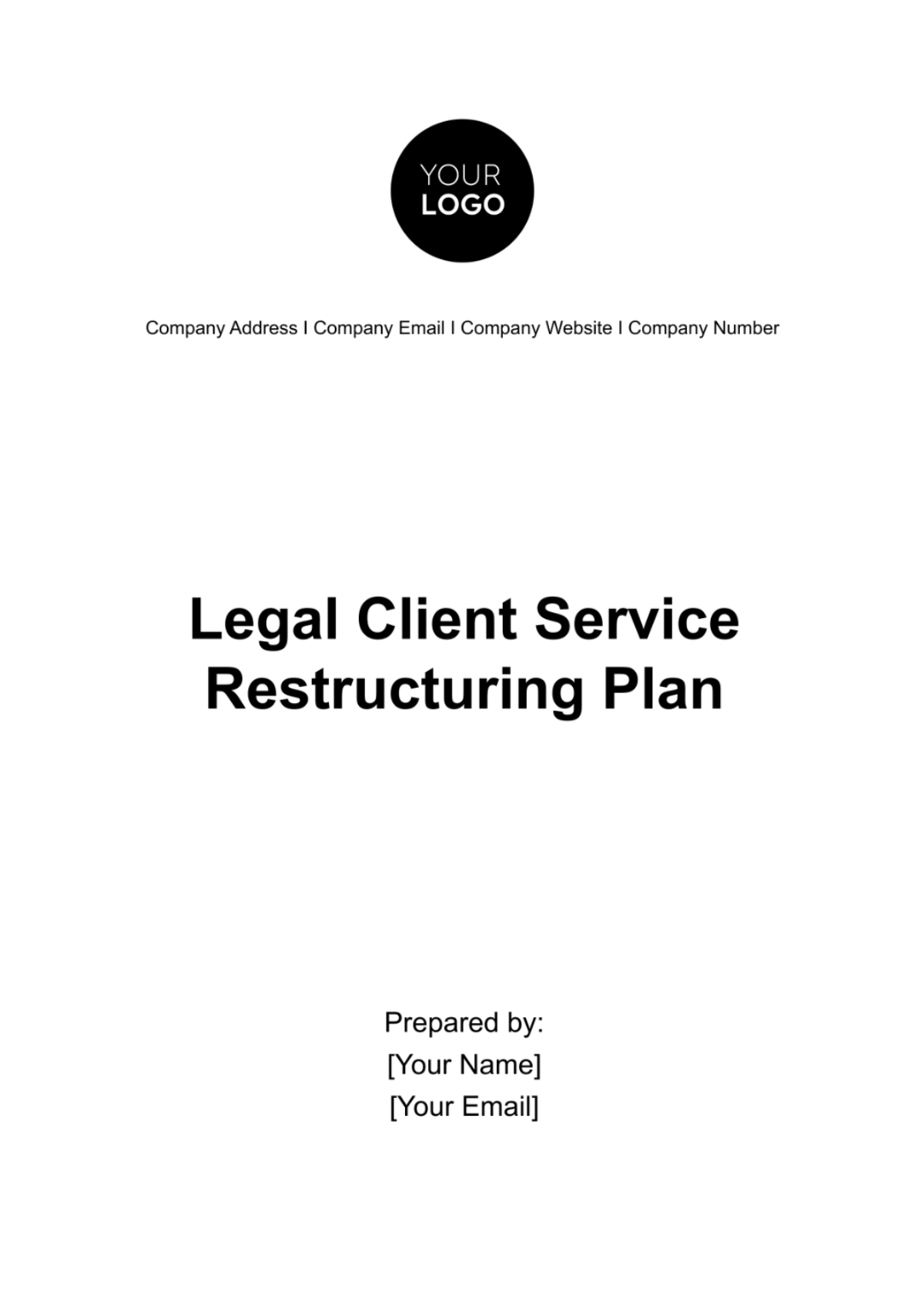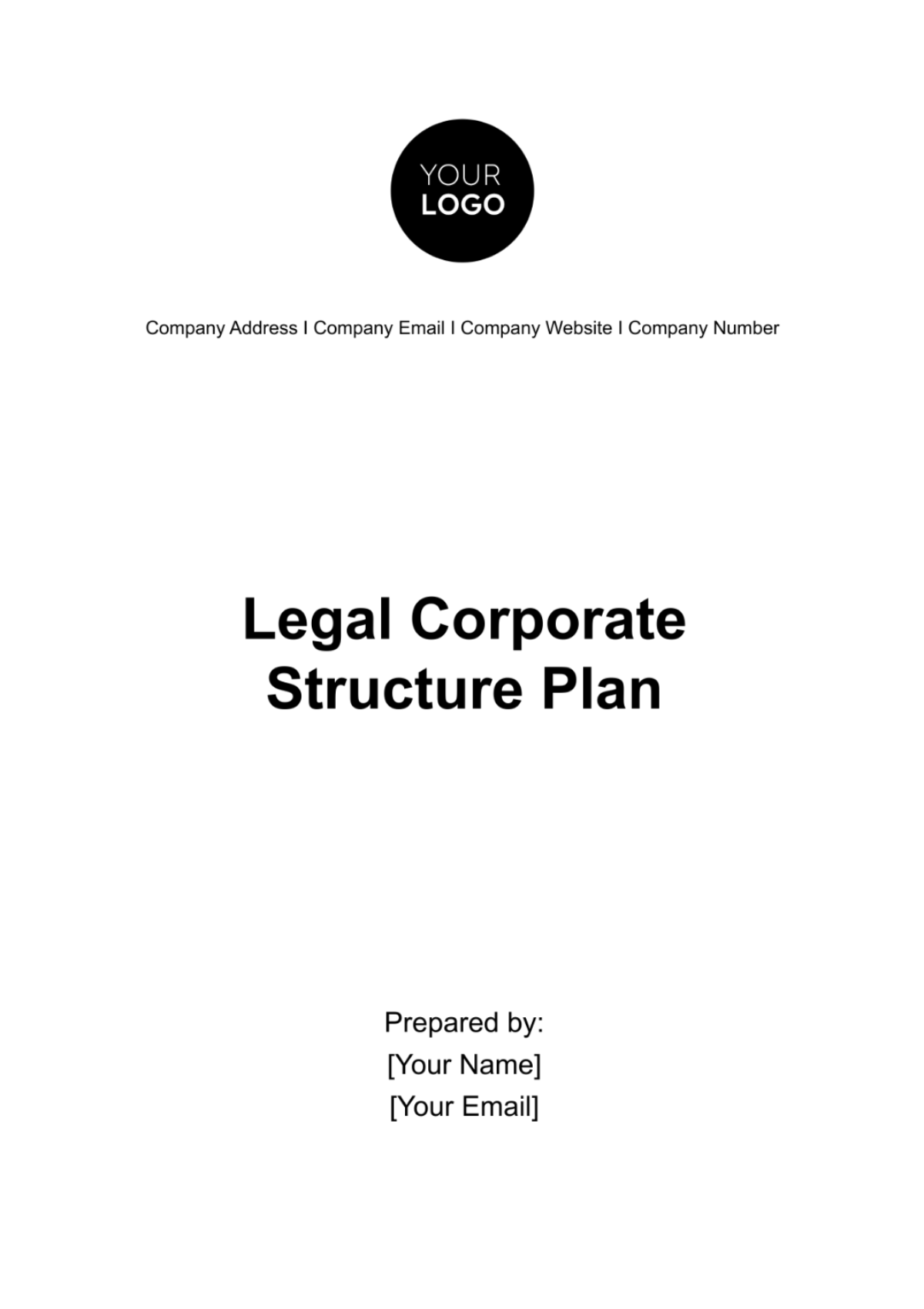Legal Intellectual Property Policy Adjustment Plan
I. Introduction
In today's dynamic business landscape, characterized by rapid technological advancements and global competition, the significance of intellectual property (IP) cannot be overstated. As a pioneering entity in the [industry] sector, [Your Company Name] recognizes the pivotal role that IP plays in shaping innovation, market differentiation, and long-term sustainability. Against this backdrop, the Legal Intellectual Property Policy Adjustment Plan serves as a strategic roadmap for refining and enhancing our existing IP governance framework to adapt to evolving legal landscapes, industry dynamics, and organizational imperatives.
With a steadfast commitment to fostering a culture of creativity, collaboration, and excellence, [Your Company Name] is dedicated to ensuring that our intellectual property assets are effectively protected, managed, and leveraged to drive value creation and competitive advantage. By undertaking a comprehensive review and adjustment of our IP policy, we aim to fortify our position as a trusted custodian of intellectual capital, instilling confidence among stakeholders and reinforcing our commitment to ethical business practices and regulatory compliance.
II. Purpose
The multifaceted purpose of this adjustment plan encompasses the following key objectives:
Compliance Assurance: In an era marked by increasingly complex and stringent intellectual property laws and regulations, [Your Company Name] acknowledges the imperative of maintaining compliance with relevant legal frameworks at the local, national, and international levels. By aligning our IP policy with current legislative requirements and jurisprudential developments, we mitigate legal risks, uphold ethical standards, and safeguard our organization's reputation.
Asset Protection and Value Maximization: Intellectual property assets constitute the lifeblood of [Your Company Name]'s innovation ecosystem, encompassing patents, trademarks, copyrights, trade secrets, and other intangible assets. Through the refinement of our IP policy, we endeavor to fortify the protection of these assets against unauthorized use, infringement, or misappropriation, thereby preserving their intrinsic value and enhancing our competitive position in the marketplace.
Innovation Cultivation: At the heart of [Your Company Name]'s ethos lies a deep-seated commitment to fostering a culture of innovation, creativity, and knowledge sharing. By elucidating clear guidelines and mechanisms for the identification, protection, and commercialization of intellectual property, we empower our employees to unleash their inventive potential, drive technological breakthroughs, and contribute to the organization's growth trajectory.
Stakeholder Confidence and Reputation Management: Transparent, equitable, and robust intellectual property governance serves as a linchpin for engendering trust and confidence among [Your Company Name]'s diverse array of stakeholders, including shareholders, customers, partners, employees, and regulatory authorities. By articulating our unwavering dedication to upholding the highest standards of IP ethics, compliance, and accountability, we bolster stakeholder trust, foster enduring relationships, and fortify our brand's reputation as a beacon of integrity and innovation in the [industry] landscape.
III. Scope
This adjustment plan applies comprehensively to all facets of [Your Company Name]'s operations, encompassing:
Employees: All individuals engaged in employment or contracted work with [Your Company Name], including full-time, part-time, and temporary staff members, are subject to the provisions outlined herein.
Contractors and Consultants: External parties, such as contractors, consultants, freelancers, and vendors, who collaborate with [Your Company Name] on projects involving the creation, utilization, or dissemination of intellectual property, are bound by the terms stipulated in this adjustment plan.
Third-Party Collaborators: Any entities or individuals with whom [Your Company Name] engages in strategic alliances, joint ventures, research partnerships, or collaborative initiatives that implicate intellectual property rights fall within the purview of this adjustment plan.
Assets Covered: The scope of this adjustment plan extends to all forms of intellectual property owned, licensed, or controlled by [Your Company Name], including but not limited to patents, trademarks, copyrights, trade secrets, proprietary software, designs, inventions, and know-how.
Geographical Reach: Given [Your Company Name]'s global footprint and transnational operations, the adjustments outlined in this plan are applicable across all jurisdictions wherein the organization conducts business activities, subject to the prevailing legal requirements and regulatory frameworks in each respective locale.
IV. Policy Adjustments
In pursuit of our overarching objectives, [Your Company Name] will enact the following adjustments to its Intellectual Property Policy:
A. Definition of Intellectual Property
The definition of intellectual property within [Your Company Name]'s policy framework will be expanded and refined to encompass a comprehensive array of intangible assets, including patents, trademarks, copyrights, trade secrets, industrial designs, plant breeders' rights, database rights, and any other proprietary information or creations vested with legal protection.
B. Ownership of Intellectual Property
To clarify ownership rights and responsibilities pertaining to intellectual property, [Your Company Name] will revise its policy to articulate clear guidelines delineating the allocation of ownership rights between the organization and its employees, contractors, or collaborators. This includes establishing protocols for the identification, documentation, and assignment of intellectual property rights arising from works created or developed within the scope of employment or contractual engagements.
C. Confidentiality and Non-Disclosure
Enhancements will be made to the confidentiality and non-disclosure provisions within [Your Company Name]'s IP policy to fortify protections for sensitive information and proprietary knowledge. This will entail the implementation of robust mechanisms for safeguarding confidential data, instituting access controls, and enforcing contractual obligations to prevent unauthorized disclosure, reproduction, or dissemination of confidential materials.
D. Licensing and Use
The policy will be updated to provide clarity on the licensing and use of intellectual property assets owned or controlled by [Your Company Name]. This includes establishing standardized licensing agreements, negotiation protocols, and royalty structures for inbound and outbound licensing arrangements, as well as delineating permissible uses of intellectual property assets by internal stakeholders and authorized third parties.
E. Enforcement and Remedies
In order to bolster enforcement mechanisms and facilitate swift resolution of IP-related disputes, [Your Company Name] will enhance its policy provisions governing enforcement actions, remedies for infringement, and dispute resolution procedures. This will involve streamlining internal protocols for identifying and addressing instances of infringement or misappropriation, as well as exploring alternative dispute resolution mechanisms to mitigate legal risks and preserve business relationships.
F. International Considerations
Given the increasingly global nature of intellectual property markets and transactions, [Your Company Name]'s policy will incorporate specific provisions addressing international considerations, including jurisdictional issues, cross-border enforcement mechanisms, harmonization of legal standards, and compliance with international treaties and conventions governing intellectual property rights. This will ensure that [Your Company Name] remains cognizant of the unique challenges and opportunities posed by operating in diverse legal and cultural contexts, while proactively mitigating risks associated with cross-border intellectual property transactions.
V. Implementation Plan
To effectively implement the adjustments outlined in the Legal Intellectual Property Policy Adjustment Plan, [Your Company Name] will adhere to the following strategies:
A. Communication and Training
Internal Communication Plan: A comprehensive internal communication plan will be developed to disseminate information regarding the adjusted IP policy to all relevant stakeholders within [Your Company Name]. This will include the distribution of policy documents, informational sessions, and updates via email, intranet announcements, staff meetings, and other internal communication channels.
Training Sessions: Targeted training sessions will be conducted to educate employees, contractors, and key stakeholders on the nuances of the revised IP policy, including its provisions, implications, and practical applications. Training modules will be customized to address the specific needs and roles of different departments and personnel within the organization.
B. Documentation Updates
Revised Policy Document: The Intellectual Property Policy document will be thoroughly revised and updated to reflect the adjustments outlined in this plan. This will involve incorporating new provisions, revising existing clauses, and ensuring consistency, clarity, and alignment with legal requirements and organizational objectives.
Comprehensive Review: A meticulous review process will be undertaken to scrutinize the revised policy document for accuracy, completeness, and compliance with relevant laws, regulations, and industry standards. Input from legal counsel, subject matter experts, and relevant stakeholders will be solicited to ensure the robustness and efficacy of the revised policy framework.
C. Legal Review
Legal Counsel Engagement: The revised Intellectual Property Policy will undergo a thorough legal review by internal and external legal counsel specializing in intellectual property law. Legal experts will assess the policy for compliance with applicable statutes, regulations, case law precedents, and contractual obligations, providing recommendations for any necessary revisions or enhancements.
Risk Assessment: A comprehensive risk assessment will be conducted to identify potential legal risks, liabilities, and exposure arising from the implementation of the adjusted IP policy. Risk mitigation strategies will be formulated to address identified vulnerabilities and safeguard [Your Company Name] against legal challenges or disputes.
D. Approval Process
Leadership Approval: Once the adjustments to the Intellectual Property Policy have been finalized, the revised policy document will be presented to [Your Company Name]'s executive leadership team for formal approval. This will involve obtaining endorsement from key decision-makers, executives, and stakeholders responsible for overseeing intellectual property governance and compliance within the organization.
Policy Dissemination: Upon securing approval from the leadership team, the revised IP policy will be disseminated to all employees, contractors, and relevant stakeholders through official channels, including email distribution, intranet postings, and staff meetings. Acknowledgment of receipt and understanding of the policy will be sought from all recipients to ensure widespread awareness and adherence.
VI. Compliance and Monitoring
A. Compliance Monitoring
Audit Mechanisms: Regular audits and assessments will be conducted to monitor compliance with the adjusted Intellectual Property Policy across [Your Company Name]'s operations. These audits will encompass a review of internal processes, documentation, and practices to identify any deviations from policy requirements or instances of non-compliance.
Corrective Actions: In the event of non-compliance or breaches of the IP policy, prompt corrective actions will be taken to address identified deficiencies and mitigate risks. This may include remedial training, disciplinary measures, process improvements, or other corrective actions as deemed necessary by management.
B. Policy Review
Periodic Review: The Intellectual Property Policy will be subject to periodic reviews and updates to ensure its ongoing relevance, effectiveness, and alignment with evolving legal and business requirements. Regular intervals will be established for conducting comprehensive reviews of the policy framework, with input solicited from key stakeholders and subject matter experts to inform any necessary revisions or enhancements.
Continuous Improvement: [Your Company Name] is committed to fostering a culture of continuous improvement and learning in the realm of intellectual property governance. Feedback mechanisms will be established to solicit input, suggestions, and insights from employees, contractors, and stakeholders regarding potential enhancements or refinements to the IP policy, thereby facilitating ongoing optimization and adaptation to changing circumstances.
VII. Risk Management
Effective risk management is essential to safeguarding [Your Company Name]'s intellectual property assets and mitigating potential threats and vulnerabilities. In this section, [Your Company Name] will outline its approach to identifying, assessing, and managing risks related to intellectual property, including:
Risk Identification: [Your Company Name] will employ comprehensive risk identification techniques, including internal audits, external assessments, and stakeholder consultations, to identify potential risks and vulnerabilities associated with its intellectual property assets. This includes risks such as infringement, misappropriation, litigation, cybersecurity breaches, and unauthorized disclosure.
Risk Assessment: Upon identification, [Your Company Name] will conduct a thorough assessment of each identified risk, evaluating factors such as likelihood, impact, and potential mitigation strategies. Risks will be prioritized based on their severity and likelihood of occurrence, allowing [Your Company Name] to allocate resources effectively and implement targeted risk mitigation measures.
Risk Mitigation Strategies: [Your Company Name] will develop and implement robust risk mitigation strategies tailored to address the specific threats and vulnerabilities identified through the risk assessment process. These strategies may include enhanced security measures, contractual protections, insurance coverage, legal remedies, and proactive monitoring and enforcement activities.
Monitoring and Review: [Your Company Name] will establish mechanisms for ongoing monitoring and review of intellectual property-related risks, ensuring that risk management strategies remain effective and responsive to changing circumstances. Regular reviews will be conducted to assess the effectiveness of implemented controls and identify emerging risks requiring mitigation.
VIII. Performance Metrics and Evaluation
To gauge the effectiveness of [Your Company Name]'s intellectual property governance framework and the impact of the adjustments outlined in this plan, performance metrics and evaluation criteria will be established. Key performance indicators (KPIs) will be tracked to measure progress, identify areas for improvement, and inform strategic decision-making. These may include:
Compliance Metrics: Metrics related to compliance with legal requirements, internal policies, and industry standards, such as the number of policy violations, completion rates for training programs, and audit findings related to intellectual property.
Asset Protection Metrics: Metrics measuring the effectiveness of asset protection measures, such as the number of intellectual property registrations, incidents of infringement or misappropriation detected and addressed, and the value of intellectual property assets secured through licensing or enforcement actions.
Innovation Metrics: Metrics assessing the impact of intellectual property policies on innovation and creativity within [Your Company Name], such as the number of patents filed, innovation output, employee engagement in innovation activities, and the commercialization of intellectual property assets.
Stakeholder Satisfaction Metrics: Metrics capturing stakeholder perceptions and satisfaction levels regarding [Your Company Name]'s intellectual property governance practices, including feedback from employees, customers, partners, and regulatory authorities.
IX. Conclusion
The Legal Intellectual Property Policy Adjustment Plan represents a pivotal milestone in [Your Company Name]'s commitment to fostering a robust, ethical, and innovative intellectual property governance framework. Through the strategic adjustments outlined herein, we reaffirm our dedication to upholding the highest standards of intellectual property management, compliance, and ethical conduct, thereby positioning [Your Company Name] as a leader in the [industry] sector.
By implementing the proposed adjustments, [Your Company Name] aims to achieve the following outcomes:
Enhanced Legal Compliance: Ensuring alignment with evolving legal requirements and regulatory standards governing intellectual property rights at the local, national, and international levels.
Improved Asset Protection: Strengthening safeguards for [Your Company Name]'s valuable intellectual property assets against unauthorized use, misappropriation, or infringement.
Facilitated Innovation: Creating an enabling environment that fosters creativity, collaboration, and knowledge sharing among employees, contractors, and stakeholders, thereby driving sustainable innovation and value creation.
Stakeholder Confidence: Instilling trust, credibility, and confidence among [Your Company Name]'s diverse array of stakeholders, including investors, partners, customers, and employees, through transparent, equitable, and responsible intellectual property governance practices.
In conclusion, [Your Company Name] is poised to embark on a transformative journey toward excellence in intellectual property management, guided by the principles of integrity, accountability, and strategic foresight. By embracing the adjustments outlined in this plan, we remain steadfast in our pursuit of organizational resilience, competitiveness, and long-term success in the dynamic [industry] landscape.
X. Contact Information
For inquiries or further information regarding the Legal Intellectual Property Policy Adjustment Plan, please contact:
[Your Name]
[Your Position]
[Your Company Name]
Email: [Your Company Email]
Phone: [Your Company Number]
Approval
This plan is approved by:
[Your Name], [Your Position]
[Your Company Name]
Date: [Date]
